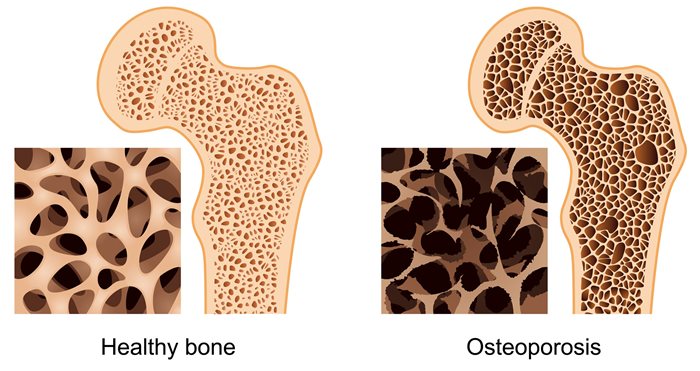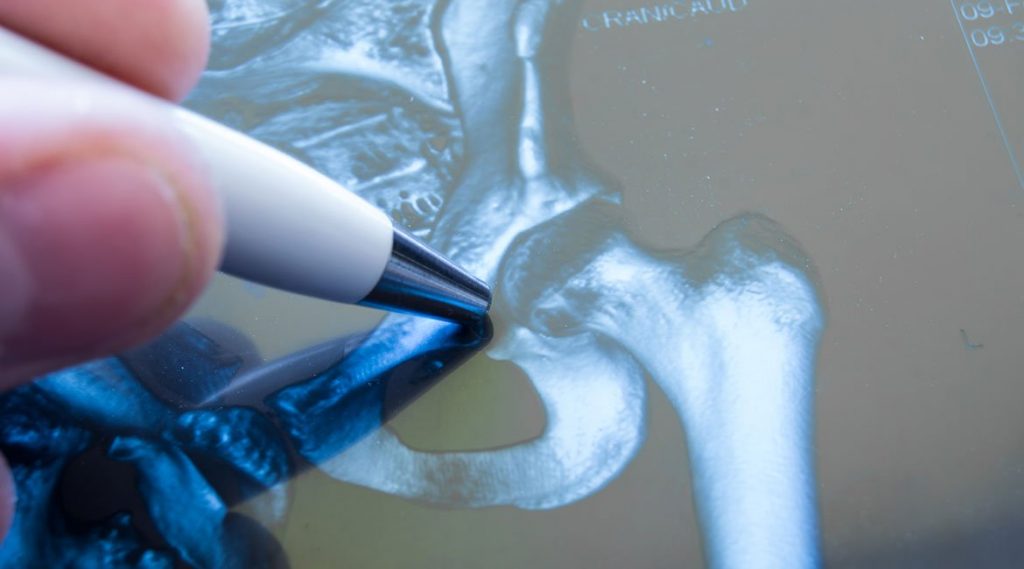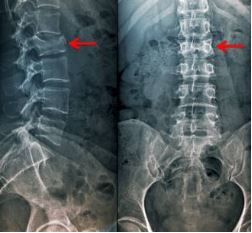Summary definition
Osteoporosis (loss of bone substance) is also known as bone loss and is a disease of the human skeleton. In osteoporosis, bones lose their strength and are more likely and more likely to break bones. The reason is that in people with osteoporosis, bone mass decreases much faster than in healthy people.
On the left the bone structure in a healthy person, on the right in a person suffering from osteoporosis

When menopausal women or men over the age of 60 develop osteoporosis, the main form of bone loss is usually present. Secondary osteoporosis is triggered by certain basic illnesses or medications. These can include bowel, liver or kidney disease, as well as metabolic or hormonal balance disorders.
Osteoporosis is usually diagnosed using a measure of bone density. In addition to the doctor-patient consultation and various mobility tests, the measurement of bone density is part of the basic diagnosis in case of suspected osteoporosis. By measuring bone density, bone loss can often be detected at an early stage.
Women are more often affected by osteoporosis: why?
The risk of developing osteoporosis is higher in women than in men. The main reason for this is the fact that many women suffer from a lack of the sex hormone estrogen after menopause. Estrogens have the property of protecting bones. Therefore, around 30% of women suffer from postmenopausal osteoporosis due to the lack of hormones after menopause.

In addition to the hormonal imbalance that can occur after menopause, other risk factors and causes also play a role in the development of osteoporosis, e.g. B. underweight or diet. So z. For example, too low a calcium intake can affect the development of osteoporosis, because calcium is an important mineral for bones. Good sources of calcium are mainly dairy products, but also plant foods like B. kale or broccoli. In order for calcium to be better absorbed by the body, care must also be taken to ensure an adequate supply of vitamin D.
Women’s bones are basically thinner than men’s, which increases the risk of osteoporosis. More than 15% of women aged 50 to 60 have osteoporosis. Beyond 70 years of age, there are even more than 45%.
Men are affected at least a decade later when they develop osteoporosis than women. Older age is one of the risk factors for osteoporosis, as are some lifestyle factors, such as: B. Smoking or reduced calcium intake. As the loss of bone mass increases with age, the likelihood of developing osteoporosis is greater. Bone degradation begins at 40 years of age. The bone mass then decreases by about 1.5% per year.
There are approximately six million patients with osteoporosis in Germany. Only about 25% of patients are diagnosed and treated early. As people in industrialized countries age, it is assumed that the number of people with osteoporosis will also increase bone loss.

Osteoporosis and natural bone turnover
In healthy people, bones rebuild for a lifetime to adapt to the demands of life. At the beginning of growth and puberty, this is mainly manifested by new bone formation.
Then the highest bone density is available. In people over 40, the focus is on bone breakdown. The annual loss of bone density in men is about 0.5 to 1%, in women, the value is about 1 to 2% per year.

If you have osteoporosis, this number is considerably higher; if the course of the disease is severe, bone mass decreases by up to six percent each year. The World Health Organization (WHO) ranks osteoporosis among the ten most common diseases and therefore among the most common diseases.
Osteoporosis symptoms: frequent bone fractures

Due to the progressive bone loss of osteoporosis, frequent bone fractures are a side effect of this disease affecting the bone system. A broken bone is also medically called a fracture.
In western Europe, around a quarter of people over the age of 70 suffer from a vertebral fracture, that is, a fracture of the vertebral body caused by osteoporosis.
Femoral neck fracture or bone fracture near the hip on the thigh is also common with bone loss, e.g. B. the femoral neck, or the arm or forearm. These fractures can result in extended hospital stay and, in the worst case, long-term care.

